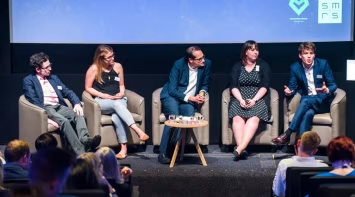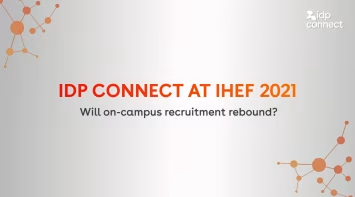Domestic postgraduate students are an increasingly important student demographic for institutions’ recruitment. This is something that has only become more evident over the past year with the impact of COVID-19 on international students (both undergraduate and postgraduate), changes to EU student funding and the governmental debacle that was A-level grades and university admissions caps.
Amongst all this madness, domestic postgraduate student recruitment is comparatively stable, predictable and - most importantly – growing. Growth in postgraduate student numbers is something that we often see when the economy takes a turn for the worse, as people retrain or upskill in a tough jobs market.
Many UK institutions have already cottoned on to the potential and security of strong domestic postgraduate recruitment, and are seeking to further develop this avenue, while a few institutions remain slightly behind the curve in this area. For those institutions that fall into the latter, the below graph from Google Analytics showing the YOY increase in traffic on Postgraduate Search alone gives some idea as to why UK postgraduate student recruitment should be at the top of your priorities this year.

Should you require further convincing, our article here goes into more detail as to why postgraduate student recruitment holds so much potential, in addition to highlighting the findings from IDP Connect’s exclusive Postgraduate Student Survey Findings and report.
Whichever camp your institution falls into/With the significance of domestic student recruitment beyond question, the next step is obtaining a thorough understanding of how to make the most of key opportunities and strategies in attracting postgraduate students in the UK. Here, we outline:
The key points in a recruitment cycle for Postgraduate students
Which subjects and when to focus efforts on
Who is applying for postgraduate courses as well as when and how to engage with them
Traffic and Applications
Domestic students are advised that, while the applications deadline for many postgraduate courses that start in September and October is normally June or July, they should make their decision regarding which institutions and course, and begin the process of applying at least 6 months in advance. For courses that start in September and October, this would mean applying around March, while for courses starting in January this would mean applying in July or August.
These recommended application times are somewhat reflected in the traffic we see on IDP Connect’s specialist postgraduate website Postgraduate Search, as shown in the graph below. Users (in blue) and clicks through to institution websites (orange) on Postgraduate Search has 2 peaks, one between June and September (with June and July the highest months) and the second in January and February.
The high levels of traffic and clicks in the late summer and Autumn indicate that many students are researching their Postgraduate course options almost a year in advance, and then again just before making their applications. Or that, much like Clearing, there is a late surge in activity and applications ahead of the start of the new academic year – suggesting that it’s not too late to attract new students for this autumns start.

When we look at how the PG Application goal conversions of our partners were spread over the year, we again see two peaks. The strongest in June and July, the application deadline for postgraduate courses, and a second smaller peak in January followed by fairly high application rates in the Spring.
The spike in January applications and traffic is significant, as it indicates a key opportunity to engage with actively applying students early on in the year, snapping up quality applicants well ahead of the second peak in the summer. While traffic drops off in March, applications remain fairly high before rising even more in June and July, which suggests that the January traffic reflects a key research and decision-making period in the postgraduate cycle which then informs applications throughout the spring.
While the summer period is essential for string postgraduate recruitment cycle, this period will be most successful when supported by pushing engaging content and marketing during the late summer/early autumn, in the spring (particularly may when both traffic and applications begin to rise), and in January.
This cycle suggests that taking an ‘always on’ approach to Postgraduate recruitment is sensible with planned surges in activity to match student search behaviour.
Which subjects when?
Having identified January, June and July as the biggest months for applications, it is important to recognise which subjects see the highest numbers of applications across these 3 months.
As highlighted in the graph below, Health and Medicine courses dominate with vastly higher numbers of applications than all other subject areas. Psychology and counselling, in particular, dominate the top few sub-discipline areas.

With such a strong skew towards Health and Medicine in these months, it is important to consider whether the popularity of these courses and their applications skews the data for other postgraduate subjects. If we remove Medicine from the data, as in the graph below, to focus on the 5 next most popular subject areas, we can still see the two distinct peaks in postgraduate traffic. However, while for some subjects, such as Education, traffic is highest in the January to March period, with a smaller peak between July and September, other subjects like Business Management and Marketing have the highest peak in the summer to early autumn with only a slight peak in volume of traffic in the January to March period.

The picture becomes even more complex when we drill down into the sub-disciplines of subject areas. For example, taking Social studies and Media which has two fairly even peaks at the start and middle of the year, when analysed at a sub-discipline level we see markedly different peaks and troughs of interest. Communications Media and Writing are both highest in January, by some margin, while Economics shows the reverse, with a considerably higher peak in the summer.

While as a general rule, institutions should ramp up engagement with students at both of these high-volume periods, the nuances of which subjects are pushed hardest in which months can and should be broken down to a granular level for best results and ROI.
What content for who?
With a good understanding of the recruitment cycle in terms of traffic, applications, and subjects, what remains is to consider who is applying, and which content will work best to engage with them.
In the below graph demonstrating share of the postgraduate audience across different age demographics, we can see that in January there is a dramatic shift towards the 18-24 age group, which coincides with the first big spike in applications.

The timing and age group would suggest that this surge in interest is from current undergraduate students in the final year of their course who are looking ahead to their postgraduate study options upon graduation. As such, focusing marketing efforts in this period on messaging that is relevant to the soon-to-graduate demographic, considering how further education can enhance their future job prospects, specialisation of skills, and any financial benefits of continuing education are likely to be most effective. Well-targeted marketing that reflects a student’s undergraduate qualification and possible next steps, delivered via engaging video and rich content, can be expected to perform particularly highly here.
Comparatively, during the late summer and Autumn, the 25-34 demographic is most active in their postgraduate studies research and application, necessitating a shift in messaging to reflect their needs, interests and motivation.
For more information on the domestic IQ tools which informed much of this research, or for support in optimising postgraduate student recruitment, you can reach out to us here.
You might like...
Domestic Postgraduate fees report
We take a deep dive into postgraduate tuition fees for UK students.

UK Domestic Postgraduate – changes to the landscape in a post-pandemic world
Download our latest report exploring changes to UK domestic postgraduate post-pandemic
PRESS RELEASE UK: IDP transforming international student recruitment with FastLane service
Matching prospective international students to best-fit institutions through FastLane



